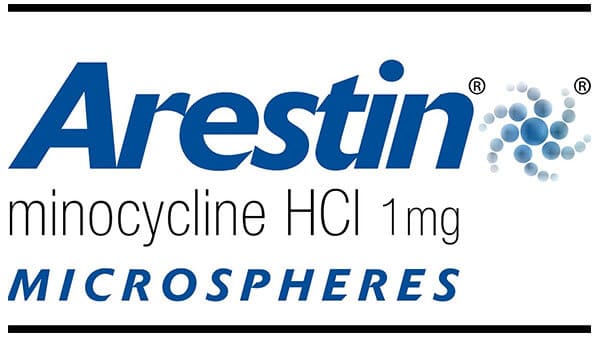
Home care is an extremely important part of maintaining healthy teeth and gums, but even excellent home care cannot prevent bacteria and plaque. If the plaque is not removed, it can harden, becoming calculus. We will recommend a periodontal maintenance program that is best for you based on how quickly you develop calculus and your past and current periodontal health. During your maintenance visits, we will perform an oral examination as well as a dental cleaning.
Cosmetic periodontal surgery includes, but is not limited to Crown Lengthening, Soft Tissue Grafts, and Bone Grafting. These procedures can enhance your smile by correcting problems like long or short teeth, uneven gum line, receding gums, exposed roots, and indentations in the gums or jawbone.
Periodontal Maintenance Program

Home care is an extremely important part of maintaining healthy teeth and gums, but even excellent home care cannot prevent bacteria and plaque. If the plaque is not removed, it can harden, becoming calculus. We will recommend a periodontal maintenance program that is best for you based on how quickly you develop calculus and your past and current periodontal health. During your maintenance visits, we will perform an oral examination as well as a dental cleaning.
During an oral examination, a visual inspection is performed to detect normal and abnormal structures of the entire mouth, head and neck. Along with radiographs, an examination detects cavities, abnormalities in existing dental restorations, gum and bone recession, and any other abnormal findings within the mouth, head, and neck
A dental cleaning, also known as an oral prophylaxis, is the removal of dental plaque and tartar (calculus) from the teeth. Specialized instruments are used to gently remove these deposits without harming the teeth. First, an ultrasonic device that emits vibrations and is cooled by water is used to loosen larger pieces of tartar. Next, hand tools are used to manually remove smaller deposits and smooth the tooth surfaces.
Scaling and Root Planing

Scaling and root planing is a non-surgical procedure used to treat gum disease. During the scaling process, specialized dental instruments are used to remove dental plaque and calculus from beneath the gums. Planing is the procedure used to smooth the tooth’s root after the scaling process. Root planing helps the gums heal and reattach themselves to a cleaner and smoother root surface.
Periodontal Splinting

Periodontal splinting is done to stabilize teeth that have become loose as a result of bone loss due to periodontal disease. The doctor will determine if periodontal splints are needed, as sometimes careful management of the periodontal disease causes the teeth to become more stable. Periodontal splints may use stabilizing wire or ribbon, composite resin, crowns, inlays/onlays, and/or veneers to accomplish the goal of stabilizing the teeth.
Arestin®

ARESTIN® is a locally applied antibiotic that delivers minocycline microspheres in the form of a powder. It is placed directly into the infected periodontal pocket at the time of scaling and root planing procedures for easy, targeted treatment. The microspheres adhere to the surrounding surfaces to provide a sustained release of the antibiotic at the site of active infection for effective treatment. It is used in pocket depth reduction and may be used as part of a periodontal maintenance program.
Benefits of ARESTIN® include:
- No local anesthesia required
- No adhesive required
- No dressing required
- No need for removal as the microspheres are completely bioresorbed
- Remains active in the pocket for an extended period of time
Crown Lengthening

Crown lengthening is commonly used to expose more tooth structure, crown lengthening involves the removal of gum tissue and/or bone to expose more of a tooth’s structure.
Osseous Surgery (aka Pocket Depth Reduction)

A pocket depth reduction is a surgical procedure used to smooth and reshape affected bone under the gum tissue. This procedure is performed when a pocket around a tooth (or teeth) has not responded to other treatments. It creates a shallow pocket making it difficult for bacteria to survive and damage bone, resulting in bone loss and ultimately, tooth loss.
What is Periodontics?
Periodontics is the treatment and prevention of periodontal disease, more commonly known as gum disease. Periodontics focuses on the support structures for the teeth, primarily the gums. Gum disease is a bacterial infection of the gum tissue caused by plaque and calculus. Plaque is a sticky film made up of food residue and bacteria that clings to the teeth. When it is not removed it hardens in calculus, which is more difficult to remove and more likely to cause gum disease.
Queens Crown Dental provides periodontal services in Honolulu, Hawaii. Call 808-526-2800 or contact us today to schedule an appointment.
Benefits of Periodontal Procedures
- Treat gum disease. Periodontal procedures can remove the plaque and calculus that cause infection, allowing the gum tissue to heal.
- Prevent gum disease from returning. Periodontal maintenance and procedures can prevent gum disease from coming back after it is treated.
- Reverse the negative effects of gum disease. Gum disease can have negative effects on your oral health, such as receding gums and bone loss in the jaw. Periodontal procedures can reverse these effects.
Procedures We Offer
- Periodontal maintenance. Periodontal maintenance involves routine teeth cleaning and oral exams to remove plaque and calculus and keep gum disease at bay.
- Scaling and root planing. Scaling is the removal of calculus from under the gums and root planing is the process of smoothing the surface of the roots to eliminate spaces between the roots and gums where plaque can gather.
- Periodontal splinting. Gum disease can cause bone loss in the jaw, resulting in loose teeth. Periodontal splinting helps stabilize these teeth as the support structures recover.
- Arestin®. Arestin® consists of microspheres of antibiotics that are applied directly to the location of the infection. They are placed under the gums in the form of powder to fight the infection at the site.
- Crown lengthening. Some patients have gum tissue that covers too much of the crowns of their teeth, which not only gives them a gummy smile, but also puts them at a higher risk of developing gum disease. Crown lengthening removes the excess gum tissue to expose more tooth material.
- Osseous surgery. Also called pocket reduction surgery, this procedure reshapes the jaw bone to form a more shallow pocket between the teeth. This prevents bacteria from settling there and damaging the bone.
Are You a Good Candidate for Periodontal Procedures?
If you have gum disease that is difficult to treat or that keeps returning, you may be a good candidate for periodontal procedures. We can evaluate your current condition and make a recommendation for the best procedures and treatments to eliminate your gum disease and prevent it from coming back. You may need periodic periodontal maintenance to remove plaque and calculus on a regular basis.
Why Choose Queens Crown Dental?
At Queens Crown Dental we provide a complete range of periodontal services. You won’t need to go to a specialist because we can handle your periodontal needs here in our office. We provide regular periodontal maintenance programs for patients who are at a greater risk of developing gum disease. We are a judgment free practice that will treat you with compassion and understanding. Sedation options are available for patients who are anxious or nervous about dental procedures.
Frequently Asked Questions
Why are some patients at a higher risk of gum disease?
There are a few different factors that can increase a person’s risk of developing gum disease. A diet that is high in sugar or a pre-existing condition of diabetes can both play a part. Lack of oral hygiene in general can increase your risk.
How often do I need periodontal maintenance?
The frequency of periodontal maintenance will vary from one patient to another. We will make a recommendation based on the severity of your infection, your personal risk factors, and the rate at which your teeth develop calculus. Frequency ranges from once a month to every 3 months.
Are periodontal procedures covered by insurance?
Most dental insurance plans cover periodontal procedures to some extent. You will need to check with your provider to inquire about the specific coverage offered by your plan.
What can I do to prevent gum disease?
Brush your teeth at least twice a day and floss once a day. If you are at a higher risk of developing gum disease or if you have had it before, you may need to brush and floss more often, such as after each meal. Schedule professional dental cleanings every 6 months.
To learn more, call 808-526-2800 or contact us today to schedule an appointment.


